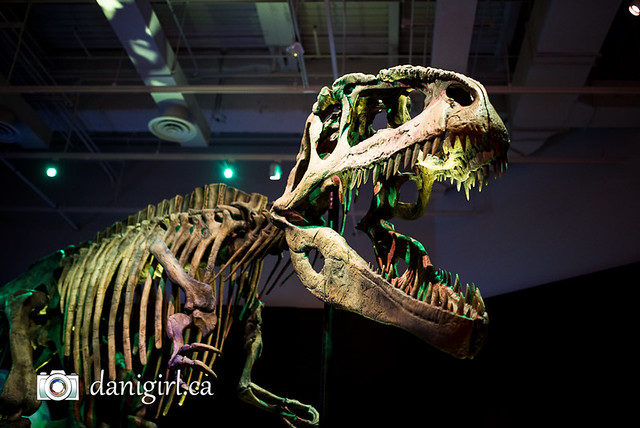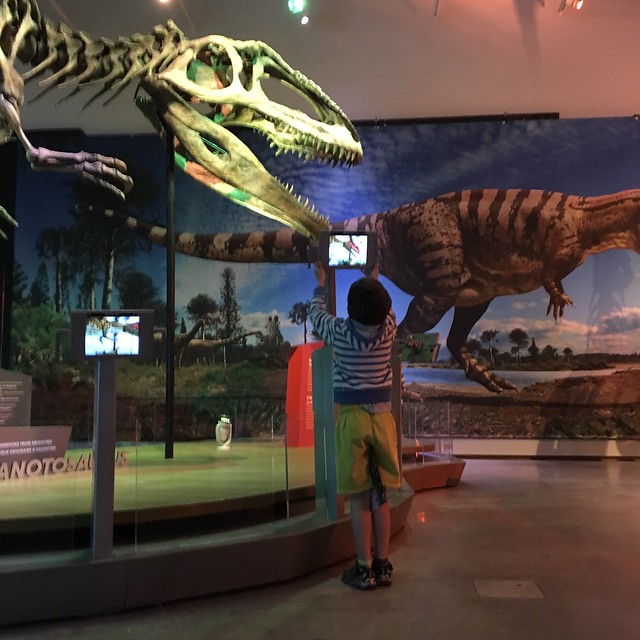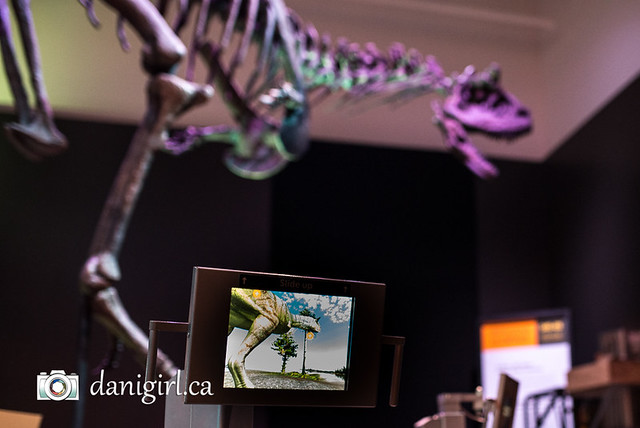Did you know the Giganotosaurus, a giant meat-eating dinosaur from the southern hemisphere, was even bigger (and probably meaner!) than the Tyrannosaurus Rex, the so-called “king of the dinosaurs”? The T. Rex lived in North America about 65 million years ago, but the 13m Giganotosaurus roamed near what is now Argentina 95 to 100 million years ago.
That’s just one of the wicked cool things the boys and I learned at the Canadian Museum of Nature’s summer blockbuster exhibition called Ultimate Dinosaurs, featuring 16 fully articulated dinosaur skeletons. It’s a fascinating and must-see exhibit for even the most casual dinosaur fan.
Like most eight year old boys, Lucas is fascinated by dinosaurs, and never misses an episode of Dino Dan on TVO. We had just finished reading a detailed book about dinosaur facts when I came across an article in the Citizen a few weeks ago about Jordan Mallon, a palaeontologist with the Museum of Nature, who introduced a new species of horned dinosaur earlier this year. I was fascinated by the idea of a local scientist doing something so cool, and Lucas and I were engaged by the story of “Judith”, a horned ceratops dinosaur the size of a small elephant whose bones were discovered by an amateur fossil prospector in Montana.
You won’t see Judith’s skeleton in the Ultimate Dino exhibition, though you can find her a few floors down in the Museum’s Fossil Gallery. The Ultimate Dinosaur exhibition is all about dinosaurs from the ancient super-continent of Gondwana, the southern breakaway piece of Pangaea that eventually became South America, Africa, Australia and Antarctica. We learned that as Gondwana formed 145 million years ago, the dinosaur species that lived there evolved in isolation from their Laurasian (northern) counterparts. The exhibit is not just about dinosaur bones, but about evolution, biodiversity, climate change, and geology. The Gondwana dinos are bigger and more bizarre than their northern cousins. The teeth of Giganotosaurus, for example, had blade-like teeth well suited to slicing meet, whereas T. Rex’s teeth and jaws were designed to crush bones outright.
Not all of the dinosaurs were giant “titanosaurs”, though one sauropod was so huge that only its leg bones can fit into the exhibition. The Eoraptor was a relatively petite meter or so long, but is known as one of the earliest species of dinosaurs, having lived more than 200 million years ago. In all, there are 16 dinosaur skeletons you can see, but there is so much more to the exhibition. They have a very cool augmented reality feature where you can look through mounted, mobile screens to see the skeleton in front of you transformed into a fully fleshed (pardon the pun) dinosaur.
There’s lots of hands-on things to do as well. You can make a replica of a fossil tooth or claw in the fossil lab, hold casts and actual fossilized dino bones and teeth (hint: the casts are lighter than the actual fossils), see fossil replicas made from a 3D printer, and use plasticine to build muscles and veins on a velociraptor skull. In the Dino Zone, the littlest dino fans can engage in dress-up and shadow theatre play, and have fun with the magnet board and giant building blocks. Lucas loved finding the stations to emboss his dinosaur fact sheet throughout the Ultimate Dino exhibition.
The kids were definitely engaged by all aspects of the exhibit, but I learned a lot, too. For example, I knew that one doesn’t find giant dinosaur bones in this part of Canada, but why not? Well, for one thing, the rock here is generally so old that it pre-dates the dinosaur giants. You can find some really neat marine fossils that are local to the Ottawa area from a spectacular 450 or so million years ago and excavate them from limestone as part of the museum’s summer programming in the Nature Live gallery.
A trip to the amazing Museum of Nature is always at the top of my list of recommendations for awesome family fun in Ottawa, but the world-class Ultimate Dinosaur show will bring us back more than once before the exhibit ends in September 2016. Note that admission to the Ultimate Dinosaur exhibit is in addition to regular Museum of Nature fees. See the Museum of Nature website for full details about rates and hours of admission. If you don’t want to pay the premium to visit the Ultimate Dinosaurs exhibition, you can still have an awesome dinosaur adventure in the Fossil Lab and Dino Zone, as well as seeing the local Ordovician fossils, and visit “Judith” in the Fossil Gallery, all as part of regular museum admission.
Disclosure: We were invited to the media preview of the Ultimate Dinosaurs exhibit. While I tried hard to fact-check my references, any errors in dino facts and figures are completely on my part!





